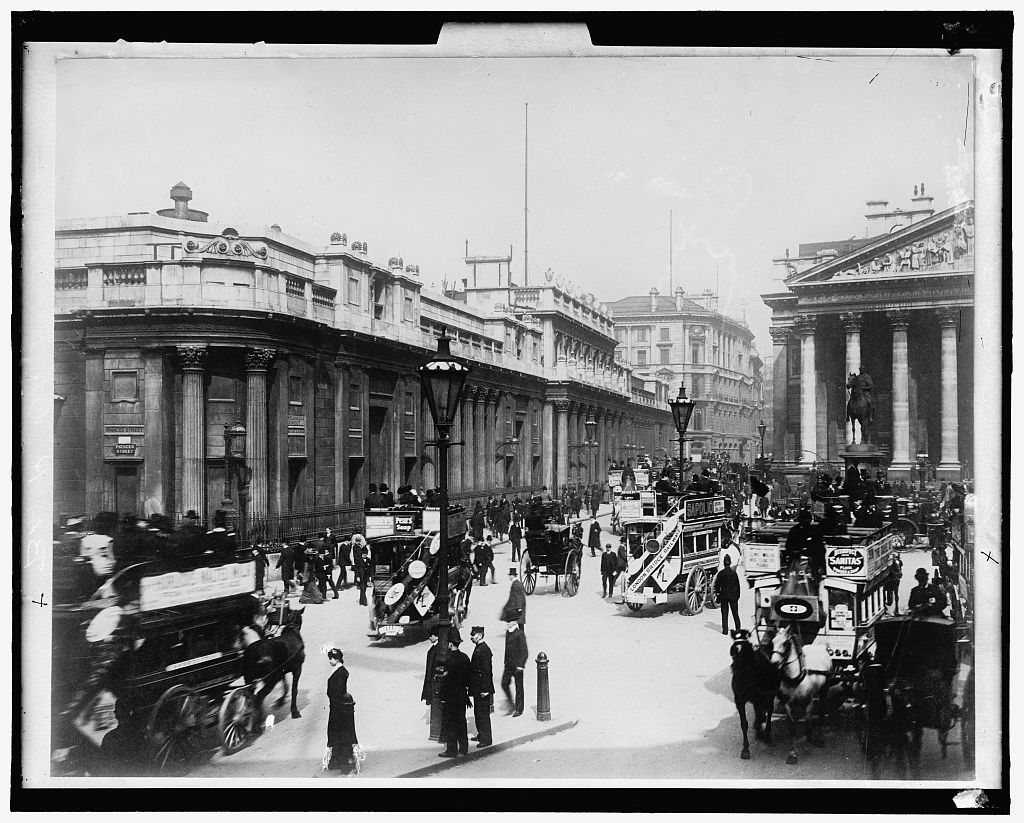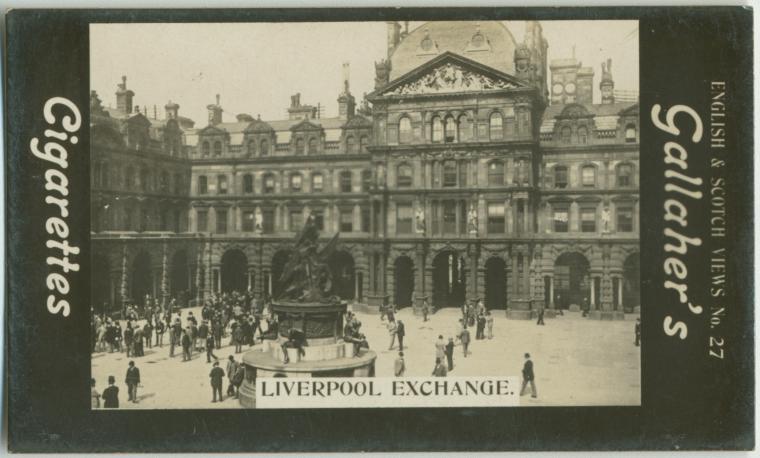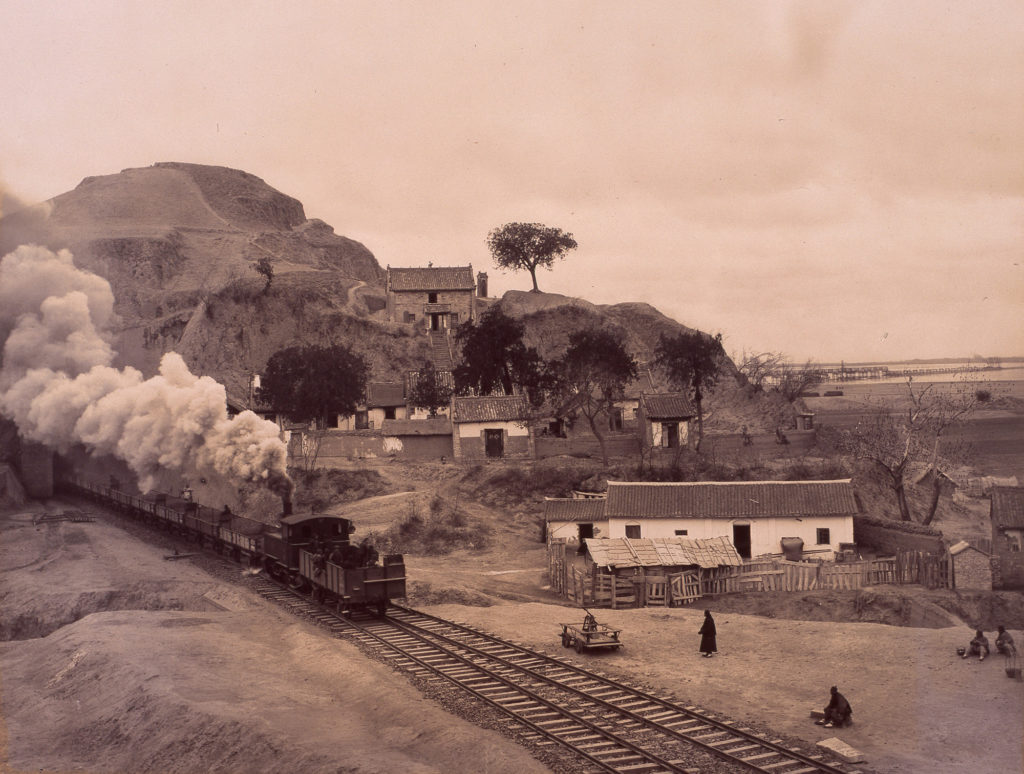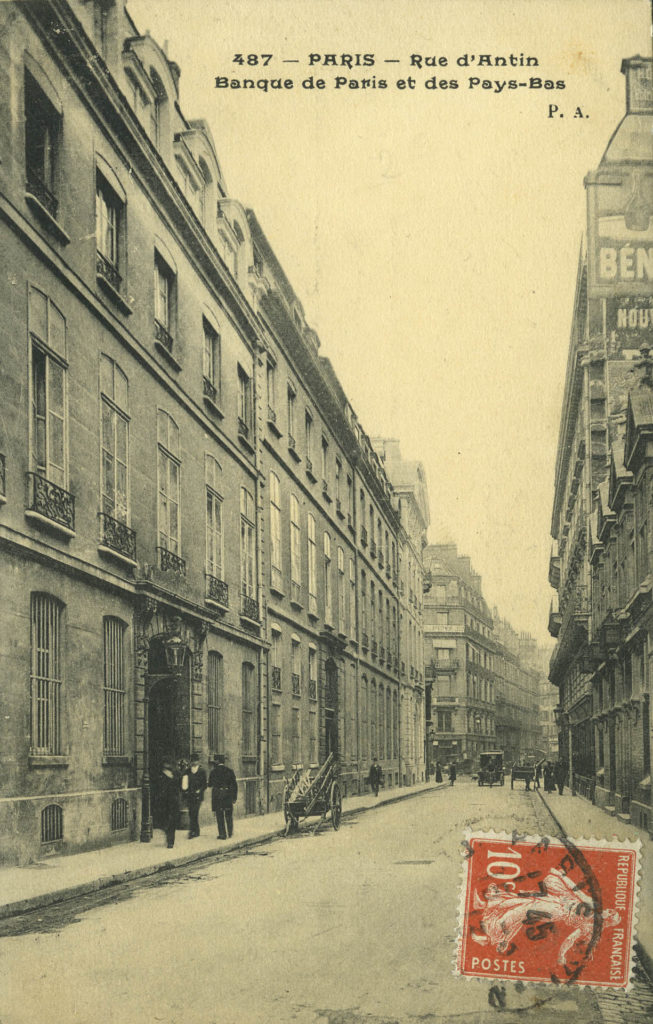Since the industrial revolution of the early nineteenth century, London’s reputation has grown steadily to its current status as “the place to be” for all world banks.
As the world’s leading banking and financial centre since the 1850s, the city supplied short and long-term capital to the rest of the world. The City was its primary financial centre, and the pound sterling the benchmark currency for international transactions. Its port – the most active in the world – was boosted by runaway economic growth, itself driven by exponential demographic expansion.
No wonder , then, that the city quickly became – and today remains – a magnet for the banks of other industrialised countries, and none more so than France. The forerunner banks of BNP Paribas have been consolidating their positions here for more than 150 years; today, as a result, the Group is a respected City institution.
The Comptoir national d’escompte de Paris: a pioneering bank in London
Establishment in London
As part of its international expansion , the Comptoir d’Escompte de Paris was the first French bank to cross the Channel and open a branch in London in 1867, at a time when its network in its native France was still in its infancy.
This initiative was the practical result of a development strategy pursued since 1860, made possible thanks to the Franco-British Free Trade Agreement signed that same year.

The CNEP’s goal was to establish banking support points all along the trade routes around the Indian Ocean and in the Far East. The first branches to be opened, in Shanghai and Calcutta, were in areas under English influence, offering a means of competing with British banks and trading interests – from which French import and export companies were seeking to free themselves – on their own territory

A strategic function in CNEP worldwide system

It was therefore no coincidence that in 1890, the London branch, having grown to the size of an independent bank in its own right, was entrusted by the bank’s central administration function with control over all the English-language branches. England maintained special relationships with the rest of the English-speaking world, consisting of the largest colonial empire in the world – covering an area a hundred times larger than that of Britain itself, with a population of 24.5% of the world’s people. Trade and capital flows were aimed primarily at this area, well ahead of Western Europe. In 1900, for example, the United Kingdom controlled 60% of all world freight traffic. British companies (banks, trading companies, etc.) operated in all major trading centres worldwide.
In 1895, the CNEP opened two sub-branches, in Liverpool and Manchester, which specialised in financing the import and export of cotton on the futures market . The CNEP thus served a sizeable woollen client base through its presence in the locations where the raw materials were actually produced and exported.


It also occupied a major strategic position in the French towns of Roubaix and Tourcoing, which had been cotton industry strongholds since the mid 19th century: British manufacturers had settled there and strong links had been established with England, which was to become a key supplier of textile machines.
As had been the case in the cotton market, the CNEP, with assistance from its correspondents abroad and its own branches in China, India, Japan, the United States, Egypt, Australia and Madagascar, used its status as a discounter to finance a substantial part of international trade using the method of acceptance on the London market. Up until 1914, the English banks, who had been accustomed to dealing only in sterling, had no specialised foreign department. Such foreign exchange business was therefore an important – and particularly lucrative – area of business for the bank.



Like all foreign banks in the City, the CNEP had no client base of small British depositors and, when financing its advances in sterling, relied on deposits from companies or correspondents, for which it paid more than the large English banks. This explains why it was geared towards issuing securities, foreign exchange transactions and financing international trade by acceptance, as none of these transactions required injections of capital. Limited, selective sterling advances were always earmarked primarily for the financing of its own establishments in the sterling area, for the subsidiaries of French companies in Great Britain, and for British companies buying and selling in France or in countries in which the bank had a presence and entrusted it with foreign exchange business or documentary transactions.
Economic & financial crisis makes the bank to adapt
But the financial crisis of 1929 and the resulting recession in world trade from 1930-1931, combined with monetary difficulties in France, were to act as a brake on the bank’s business activity. In 1931, matters were further complicated by England’s forced abandonment of the gold standard . As sterling fell, it took with it the currencies of many Commonwealth or independent countries (35 in all, from September 1931 to April 1933). There was talk of a “wave of monetary distrust”. The CNEP generally fared well, thanks to the very large deposits it had held since 1924 on behalf of the Bank of France and the London Treasury’s financial agency. In the interests of repaying the £33 million debt to the Bank of England accumulated during the First World War, French banks were required to act as go-betweens, paying instalments to the Bank of England.

With the arrival of World War II and the Vichy government’s signature of the armistice of 1940, the Bank of England blocked all accounts drawn on French banks. CNEP agencies in the sterling countries (India, Egypt, Australia and the United Kingdom) were placed under the management of the London branch, which was temporarily promoted to Head Office. French bank branches and subsidiaries established in London were cut off from France and placed under the surveillance of the British authorities. They were able to maintain only a basic service to meet the needs of their local customers and their operations in the sterling area. In the aftermath of the war, the London branch’s primary task was to finance the reconstruction and economy of the sterling area.
In 1967, the operations of the CNEP branch in London were centralised and brought under the control of the British & French Bank Ltd, the British subsidiary of the BNCI created in 1949.
The Banque Nationale pour le Commerce et l’Industrie (BNCI) becomes an English subsidiary
In 1938, the Banque Nationale pour le Commerce et l’Industrie (BNCI), created in 1932, opened its first foreign branch in London. Small in size, as intended by Paris, it was initially planned as something of an observation post: its role was to strengthen links with customers for whom France was unable to offer the services offered by the big French banks with a long-standing presence in London in terms of Franco-English business relations

In 1947, the branch became a subsidiary, the British & French Bank (for Commerce and Industry) Limited. This legal transformation provided the former headquarters of the BNCI with an ability to conduct foreign exchange transactions that was not provided for under French law, and that foreign banks in England were unable to obtain. The objective was to compete with London for the constantly-growing levels of business following Britain and France’s respective colonial expansions.
The new institution thus served as a bridgehead for all the sterling transactions conducted by the BNCI Group, the aim of which was to encourage business between the sterling and franc areas. The bank offered a wide range of services and financing methods to French companies with plans to set up operations in the United Kingdom, and extended its operations to international trade, specialising in the financing of trade between the Commonwealth countries and France and its colonies.
The Banque Nationale de Paris (BNP): an acquired Anglo-French DNA
Following the French merger of the BNCI and the CNEP in May 1966, the Banque Nationale de Paris (BNP) sought to consolidate its business in the United Kingdom. To this end, the CNEP subsidiary in London merged with the British & French Bank Limited in 1967. The new entity moved into the buildings occupied by the CNEP at 8-13 King William Street, and CNEP’s staff formally became employees of the new bank after a capital increase. It was not until March 29, 1974 that the Banque Nationale de Paris Limited (BNP Ltd) succeeded from British & French Bank Ltd, becoming Banque Nationale de Paris plc in 1981.

Fortis: the first Belgian bank to cross the English Channel
In 1909, the Banque Sino-Belge, a subsidiary of Société Générale de Belgique (Fortis) founded in 1902, opened a head office in London. Its objective: to unlock business transactions with the Far East in the world’s leading financial centre, and defend its financial and industrial interests in China

In 1913, at the instigation of the Société Générale de Belgique, a syndicate took control of the Anglo-Foreign Banking Company Ltd., established in London since 1872 and specialising in banking transactions with Continental Europe. Its offices merged with those of the London branch of the Banque Sino-Belge, which then became the Banque Belge pour l’Étranger (BBE) and moved to 4 Bishopsgate, in the heart of the City. It was one of the few banks at that time to benefit from “money trader” status, affording it a privileged position on the discount market.

In 1934, the BBE branch was made a subsidiary, and became an English company – the Banque Belge pour l’Étranger (Overseas) Ltd. In 1949, it employed 220 people, mostly British nationals.
In 1957, the bank was renamed Banque Belge Limited. A foreign exchange market specialist since its earliest days, it was one of the first banks to enter the eurodollar market. Acting as an agent of Société Générale de Banque for the syndication of loans, the financial institution achieved pre-eminent status in the field of Eurocurrency loans in the 1960s. It was also considered a specialist in documentary credit and export financing. In 1970, it took over the London branch of the Banque Italo-Belge, another banking subsidiary of the Société Générale group.

In 1988, the Société Générale de Banque created a branch named the “Generale Bank London Branch”. Bank Belge Ltd brought over its Merchant Banker activities to the branch, refocusing its own business on Private Banking.


Paribas: last but not least
“The place to be”
After the end of the war, with the increasing liberalisation of trade and the exchange rate flexibility introduced by the British Government in 1951, the United Kingdom gradually regained its place as an international financial centre, gaining pace from 1960 following the development of the eurodollar market . London was quick to establish itself as the world centre of this new financial market, and many American banks settled in the City. In 1964, the British financial authorities authorised the issue of foreign borrowings in dollars – thus enabling the City, in the absence of foreign borrowing in sterling, to capture the market for European currencies and eurodollars.
Affirmer physiquement sa présence
That same year, the Banque de Paris et des Pays-Bas (Paribas) finally decided to set up a subsidiary, the Banque de Drawing on nearly a century of history of London banking, the bank relied not on a network of branches (as was the case with the deposit banks), but rather on alliances between banks, its business consisting of planning and running the operations of borrowing and issuing international securities (governments , communities, public utilities, businesses), taking equity positions and helping to establish or restructure businesses.
Maintaining a presence on the London market, even indirectly, was vital to Paribas, at a time when the largest English banks were playing a prominent role in international trade, short-term lending and the issuance of bonds. For this reason, the bank had a number of correspondent banks on the London market, foremost among which was the Comptoir national d’escompte de Paris.


A challenging first few years. Following the model of a traditional commercial bank, it was mainly involved in treasury and merchant banking activities. Having found itself competing against very aggressive British banks in the 1950s and 1960s in the commodities and investment banking markets, Paribas in 1967 took over a British securities company – the London and Yorkshire Trust Limited – in order to accelerate its growth, at the same time creating an investment fund, Paribas Investment Trust Limited. But the results were disappointing, and Paribas was to sell on this initial acquisition in 1969. In the same year, the subsidiary became a branch – meeting both the new rules set by the Bank of England, which limited options for the subsidiary’s growth, and the need for a return to head office control.

It became one of the major hubs of the bank’s international activity, supported by Geneva and Luxembourg: in 1984, Paribas Capital Markets (later to become Paribas Limited Paribas Londres in 1989) was created, and since 1985 has been the world leader on the ecu market. In 1986, the Paribas Futures Ltd & Commodities Indexed Transactions Group (CITG) was founded. In 1994, the London entity was renamed the Emerging Markets Group.

On May 23, 2000, following the merger of the Banque Nationale de Paris (BNP) and Paribas, the BNP Paribas Group was created in Paris. In London, this marriage enabled Corporate and Institutional Banking and International Financial Services for companies or institutional clients to become European leaders.
The pricture today
Paradoxically, the weakening of the British pound in the 1930s as a reserve and exchange currency – along with the two world wars, which gave a firm boost to the British economy – served as a stimulus for the City of London, which has constantly maintained its status as the leading international financial centre.
Arriving at key moments in their history in the British capital, all of BNP Paribas’ forerunner banks have maintained their positions in London for more than 150 years, despite banking legislation that has frequently worked against them and obstacles to multiple exchange controls.
After Paris, London is now thought of as the BNP Paribas Group’s “second headquarters”, with nearly 6,000 employees working in the United Kingdom. From investment to asset management, insurance to leasing, and personal to corporate services, all areas of the Group’s business are represented in the British capital, and in a wider sense, on British soil.












